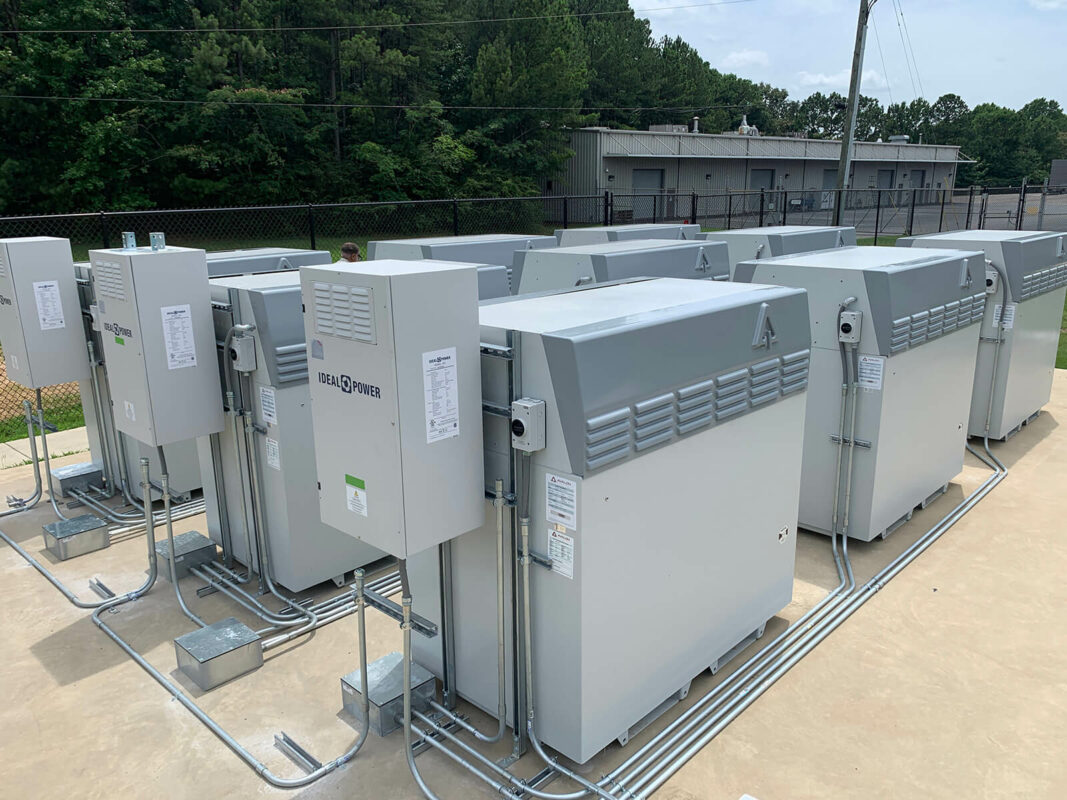
Longer-duration storage covers a number of technologies, including flow batteries such as those from Invinity Energy Systems. Image: Invinity Energy Systems.
A new market mechanism for longer-duration storage should be created according to the Association for Renewable Energy and Clean Technology (REA).
In a new report, the trade association looked into the need for longer-duration storage and the current challenges facing the technology, with a focus on storage with a duration of up to 24 hours. Technologies included within that include flow batteries, gravity batteries, pumped hydro, liquid air energy storage and compressed air energy storage.
The REA detailed how the current merchant model presents a “significant barrier” to the development of large-scale longer-duration energy storage projects. It said that given the long construction period of large infrastructure projects and the time that will be required for consenting and procurement, action “needs to be taken now” to enable the first batch of new longer-duration storage to be commissioned by 2030.
It is therefore calling for the government – supported by Ofgem – to establish a future-proof income stabilisation mechanism to de-risk investment into longer-duration energy storage, building on existing market arrangements.
This would enable longer-duration storage to compete with smaller-scale, shorter-duration technologies that require a smaller Capex but target the same revenue streams, the REA said.
The trade association continued to state that the mechanism should be compatible with the operational profile of storage, incentivise efficient dispatch through price signals, de-risk investment effectively and enable participation from a range of technologies including emerging technologies.
When it comes to why the current market structures and incentives don't provide a favourable environment for longer-duration, the REA looked at a number of different market mechanisms. In the wholesale market revenues derived from net-energy sales through arbitrage payments do not currently provide bankable and adequate investment signals due to the price uncertainty involved and their short-term nature, it said.
In the Capacity Market meanwhile, there aren't “clear investment signals to support the deployment of large-scale, low-carbon flexibility” and the Contracts for Difference scheme, while being the government's main instrument for incentivising low carbon generation, doesn't have a main objective of investing in flexible capacity.
Lastly, the short contracts offered for balancing and ancillary services means a lack of security of returns for investors considering developing longer-duration energy storage projects.
Alongside the REA's call for a new mechanism to support longer-duration, it is also calling on the government and Ofgem to issue a joint call for evidence on longer-duration storage alongside the forthcoming update to the Smart Systems and Flexibility Plan.
This should seek input from National Grid ESO, the wider industry and academia on how much electricity storage will be required in a net zero energy system across different timescales, look into the challenges of capital-intensive large scale flexibility projects with long construction periods and explore possible options to enable their deployment and assess how existing barriers to wider deployment of longer-duration energy storage can be removed and an appropriate market framework put in place.
Currently, the government is launching a £68 million competition for longer-duration energy storage, with this highlighted in both the energy white paper and in the Budget.

